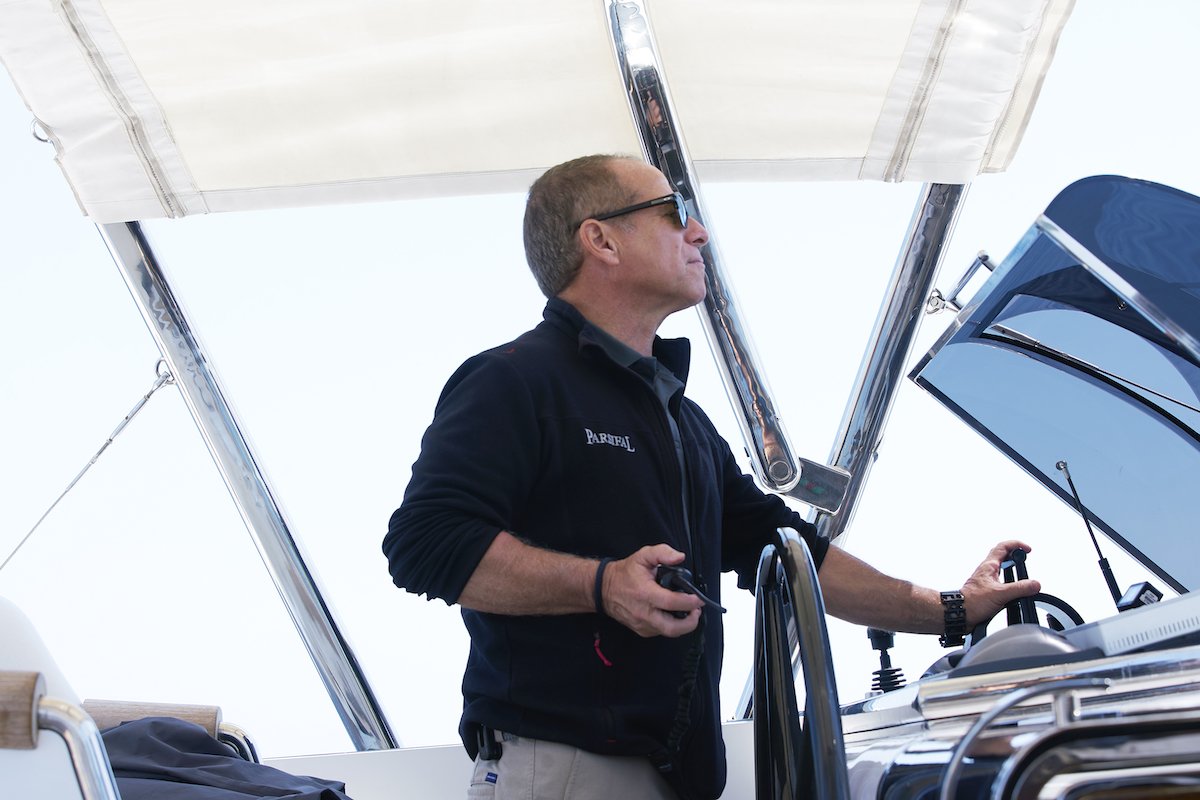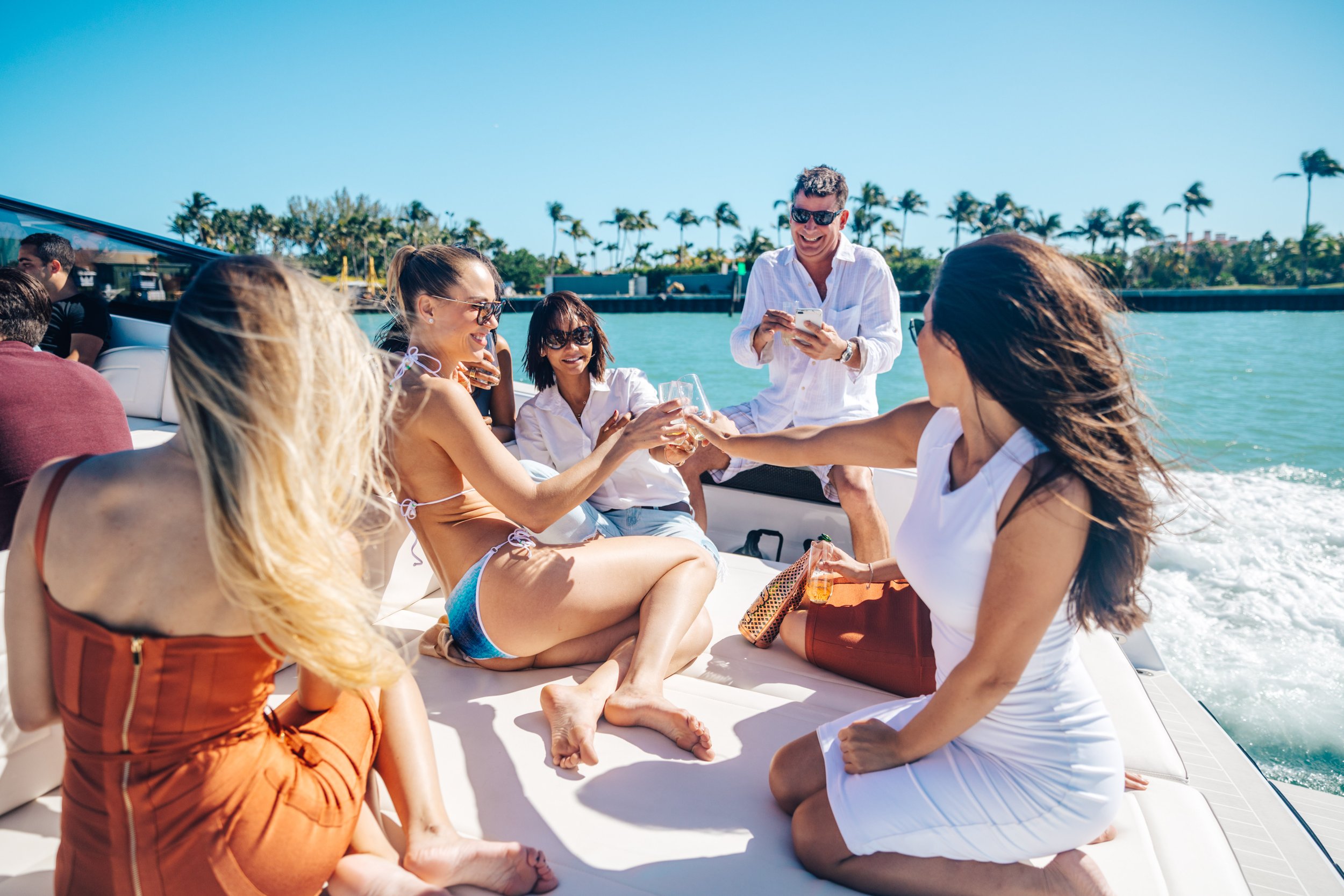7 Keys to Charter Success
SAFE CHARTERING SERIES
How To Setup your personal boat for charter success
If you’re reading this, you’re interested in monetizing your boat. Whether to offset your costs or maximize profits, follow a few steps to set yourself up for success. Here is a step-by-step guide to preparing your entire operation for legal, safe and profitable charter activities.
Writer’s Note: Most of the references in this article pertain to day chartering. For specific questions related to overnight operations, email valid@rnmarine.com.
KEY QUESTIONS TO ASK YOURSELF
WHAT ARE MY CHARTER GOALS?
Operator goals are usually somewhere between offsetting costs and maximizing profits. You might then say ‘Why wouldn’t you maximize profits?’? Good question. When you factor depreciation the increased cost of preventative maintenance, breaking even in the long term doesn’t sound so bad.
Your goals will define the way you contract your insurance, select your crew, price your services, and even determine the most efficient place to dock your boat. By setting accurate goals, you will spend time and money effectively, and prevent a costly rebuild should you need to retrace your steps later on. We’ll discuss those steps later in this article.
HOW WILL I LIMIT MY LIABILITY?
Chartering your boat will expose you to significant risk. There’s no way around it. With any business, there are smart ways to mitigate risk while retaining a top notch customer experience. Consider your legal structure, contracts, insurance and crew training to be your protective blanket. Make sure you’ve addressed each point prior to starting your commercial operation.
Housing your setup within a corporation is necessary, but its not a perfect solution to liability management. This is covered in detail later in the blog.
WHERE WILL I OPERATE MY VESSEL?
Just as your goals dictate your setup, your operating area does too. You’ll want your protective shield to be active everywhere you cruise while customers are on board. Most importantly, match your insurance to your preferred operating area. Don’t plan charters to Nassau if your policy restricts you to US waters. Don’t take your fishing group 30 miles offshore if your policy only allows 15.
You’ll also want to consider if your marina location allows chartering. The Covid Effect still has its grip on the marine world, with more demand for boat slips than ever before. This demand has given marinas more leverage to dictate what you do in (and around) their property.
WHO IS MANAGING THIS FOR ME?
Your captain is a great answer, but not all captains are built for the day-to-day office grind of a bustling charter business.
Your day-to-day operation will differ whether you give your boat to a charter broker, hire someone internally to manage operations, or run the charter business yourself. Having a dependable day-to-day operation will separate you from the crowd; the day charter market is a mix of wannabes and short-term profiteers. If your boat is ready in short notice, clean and dependable, you’ll be the apple of the charter broker’s eye.
CONVERT YOUR VESSEL FOR CHARTER-READY ACTIVITIES
There is only one way to prepare yourself for charter; the right way (sorry for the cliché). Below we share RN Marine’s credo in preparing vessel, crew and owner for safe and effective chartering.
STEP 1: OWNERSHIP & REGISTRATION
Who owns the boat and how do you want it registered?
The first answer should be easy, the second usually requires some thought. Owning your charter vessel in a company is key, but its designation and mailing address are just as important (i.e. Florida S-Corp). Keep in mind, owning your vessel in a company does not relinquish you completely from liability should something catastrophic happen. In order to retain your protective shield, you’ll need to prove the vessel is operated to a corporate standard: i.e. costs paid by business bank accounts, movements done by verified company representatives, and not utilized for personal gain.
Once the ownership structure is setup, you’ll register your vessel appropriately for commercial activities. For the sake of simplicity, we’ll assume you’re registering in the United States. You have options: 1. State Registration, and/or 2. Federal Registration.
Your goal when chartering is to have a federal registration. Federal registration (otherwise known as a United States Coast Guard Certificate of Documentation, or “COD”) allows you to run crewed charters in US waters by way of a Coastwise Endorsement. To get a Coastwise Endorsement, you’ll need a US-built vessel or a MARAD waiver if your vessel was built internationally. Without the Coastwise Endorsement, your commercial operation is limited to bareboat charters.
*For more information on bareboat chartering and what it means for you and your customer, read our article on the Troubles of Bareboat Chartering.
STEP 2: CONTRACTS
Don’t charter your boat without a contract. This doesn’t require a ritzy lawyer if you’re short on cash. For an affordable option, there are templates you can find online, although they won’t be tailored to your operation.
Beyond just having a contract, its more important to understand the legal within the contract. This includes USCG legal requirements for valid chartering, dates/times, pickup/dropoff locations, monies due, client and operator responsibilities, liability and indemnification, crew agreements and more.
Generally, you will have two charter formats: crewed charters and bareboat charters, each with its own set of legal parameters. For the purpose of this article, we simply mention that having a set of legally sound contracts is important to running a valid charter operation. For a deeper dive into the technicalities of the different charter formats, visit our blog.
STEP 3: GETTING PAID
This one is surprisingly overlooked. Having a wide set of payment options is important to locking in the deal while its hot. With payment forms broadening in today’s high-tech economy, being ready for payments via Venmo, Apply Pay, Samsung Pay and crypto (yikes) can be advantageous. Regardless of the new age tech, wire information, credit card processing and a process for taking cash is a must. We like to set our clients up with Quickbooks accounts and pre-build their charter products so invoices can be made and sent from a smartphone.
STEP 4: INSURANCE
Say hello to the elephant in the room. We frequently see operators who think just having commercial insurance is the safety blanket they’re looking for. Unfortunately insurance is a tool you have to manage alongside the rest of your day-to-day tasks.
In major markets (we’re looking at you Florida) claims continue to climb while risk continues to increase. This combination makes it impossible for underwriters to stay in popular markets with competitive rates, and consumers are feeling the pain. After the majority of storm moratoriums from Hurricane Ian were lifted in November 2022, only one company was writing policies with skyrocketing premiums. Premiums always correlate to the level of risk in your file, and can sometimes be managed by showing your professionalism, safety procedures and experience.
Factors such as dock location, forecasted business levels, captain experience, contract quality, the use of liability waivers and a good hurricane plan can all help towards getting a competitive rate.
We like to acquire insurance towards the end of our vessel conversion process, in order to guarantee our underwriters see the full scope of our client’s professionalism.
STEP 5: USCG SAFETY STANDARDS & EQUIPMENT
All commercial vessels, whether operating as a crewed charter or bareboat charter, are required to have certain safety systems and equipment on board during operation. The exact equipment depends on your vessel type, with the primary factor being length over or under 65’.
Here’s a sample list of USCG safety equipment stocked on a 50’ boat for crewed charters:
(12) Type I PFD’s (adults)
(4) Type II PFD’s (children)
(1) Type IV PFD (throwable)
(2) Handheld B10 fire extinguishers
(1) Offshore emergency medical kit
(1) Flare kit: Red (day and night) & Orange (day)
(2) Air horns
(1) Whistle (back up sound producing device)
(1) 20” life ring
(1) Rules of the road USCG handbook
For a finite list of required safety equipment for your vessel, consult the US Coast Guard website.
QUICK TIP: Do you want to inspect your vessel’s safety systems and equipment? RN Marine conducts vessel safety inspections in the South Florida area.
STEP 6: CREW SELECTION & TRAINING
Selecting crew for your charter operation is two-fold. First, hire a licensed mariner capable of operating your vessel. They’ll need have earned a merchant mariner credential from the USCG which aligns to the vessel they are operating. Second, be able to pass the USCG drug testing requirements should they be operating a crewed charter. As an operator, you’re responsible for implementing a drug testing policy with your crew which fulfills the requirements of the USCG. This includes drug testing within a certain timeframe, random testing and requiring a drug test should you (or your staff) have reason to believe crew have been under the influence. Once you have your crew selected and verified, its time to train them up.
Even with years of experience elsewhere, your crew should be trained to a company standard to ensure a consistent client experience. They must understand the legal framework of chartering, safety procedures, and hospitality guidelines to ensure a quality experience, which we’ll focus on in the next section.
For example: crew need to know the difference between a bareboat and a crewed charter. We also train our clients in a standard pre-departure safety demonstration. Small features like this leave you confident in your team, and more importantly, leave the clients confident in your team.
STEP 7: CUSTOMER EXPERIENCE
Last but not least, the design of the customer experience should be systemized just like with your safety protocols. Your client experience should be choreographed from the moment they are introduced to your captain to the moment they receive a follow up survey. Early communication gives your crew ample time to arrange special requests, accommodate special needs at boarding, fulfill surprise experiences on board, and hit all the client’s scheduled activities while on charter.
Consider something unique to your brand while guests are on board. Chilled lavender towels is a popular option in our world, especially when in a hot climate. While there are plenty of safety regulations and legal requirements to operating a successful charter business, we’re ultimately here to put smiles on faces and design the best customer experience we know how.
NEED HELP ORGANIZING YOUR CHARTER BUSINESS?
Valid Vessel is a proprietary process created by RN Marine to prepare your boat and your business for legal charter operation. Purchase the Valid Vessel package and leave your worries behind. Packages are inclusive of legal structuring, tailored contracts crew training, USCG safety inspections and delivery of a summary binder at the conclusion of the process. Turnkey packages start at $9,950 per vessel.
Schedule a FREE 15-min consultation with Valid Vessel
to discuss your charter goals and see if the service is right for you.









